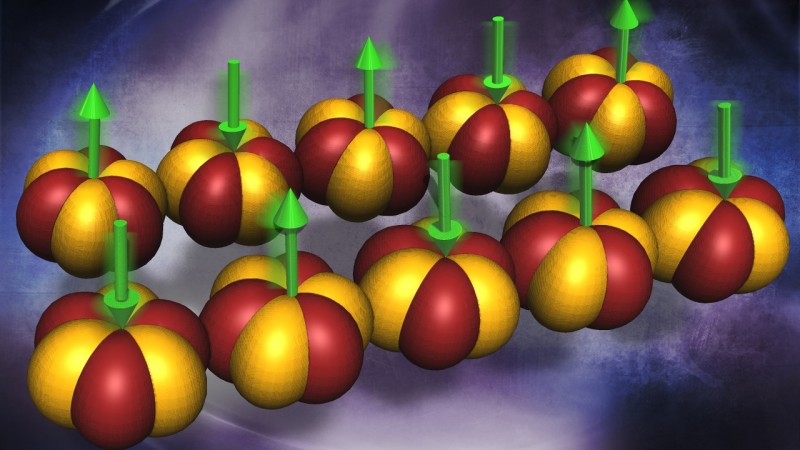Media Contact
Jeremy Rumsey, Communications
rumseyjp@ornl.gov , 865.576.2038
June 13, 2016 – A new study by a multi-institutional team, led by researchers from Brookhaven National Laboratory and Stony Brook University, has revealed exotic magnetic properties in a rare-earth based intermetallic compound. Similar studies suggest a better understanding of those types of behaviors could lead to applications in quantum computing and improved storage device technologies.
Researchers at the Department of Energy’s Oak Ridge National Laboratory and their collaborators used neutron scattering to uncover magnetic excitations in the metallic compound ytterbium-platinum-lead (Yb2Pt2Pb). Surprisingly, this three-dimensional material exhibits magnetic properties that one would conventionally expect if the connectivity between magnetic ions was only one-dimensional. Their research is discussed in a paper published in the journal Science.
An electron can theoretically be understood as a bound state of three quasiparticles, which collectively carry its identity: spin, charge and orbit. It has been known that the spinon, the entity that carries information about electron spin, can “separate” itself from the others under certain conditions in one-dimensional chains of magnetic ions such as copper (Cu2+) in an insulating host. Now, the new study reveals that spinons are also present in metallic Yb2Pt2Pb.
The experimental team included ORNL postdoctoral researcher and lead author Liusuo Wu, Georg Ehlers, and Andrey Podlesnyak, instrument scientists at ORNL’s Spallation Neutron Source (SNS), a DOE Office of Science User Facility. The team made use of the neutrons’ sensitivity to magnetic fluctuations at the atomic scale and the world-leading capabilities of the SNS Cold Neutron Chopper Spectrometer (CNCS) instrument.
Placing a sample of Yb2Pt2Pb in the neutron beam and carefully mapping the dependence of the scattering intensity on angle and time-of-flight revealed characteristic signatures of the magnetic collective excitations in the material.
“An electron’s ability to exhibit quantum magnetic behavior like this depends on how many pairings it can make with its nearest neighbors,” Wu said. “In a one-dimensional chain, each has only two neighbors, making quantum fluctuations much more dramatic.”
With contributions from collaborators at Brookhaven, Stony Brook University, and the University of Amsterdam, the research team developed a picture of spinons propagating in a particular direction, and how a magnetic excitation spectrum was calculated, based on that model, and compared it to the experimental data.
“The element ytterbium, found in the 4f group of the periodic table, often makes an interesting ingredient in a material. Here, the leading magnetic interactions conspire with the crystal structure and the local anisotropy to create an effect we call geometric frustration,” Ehlers said. “In materials research, this gives us a handle on the properties of a particular system and allows one, ultimately, to design materials with specific desirable properties.”
Click here to read the full story.








